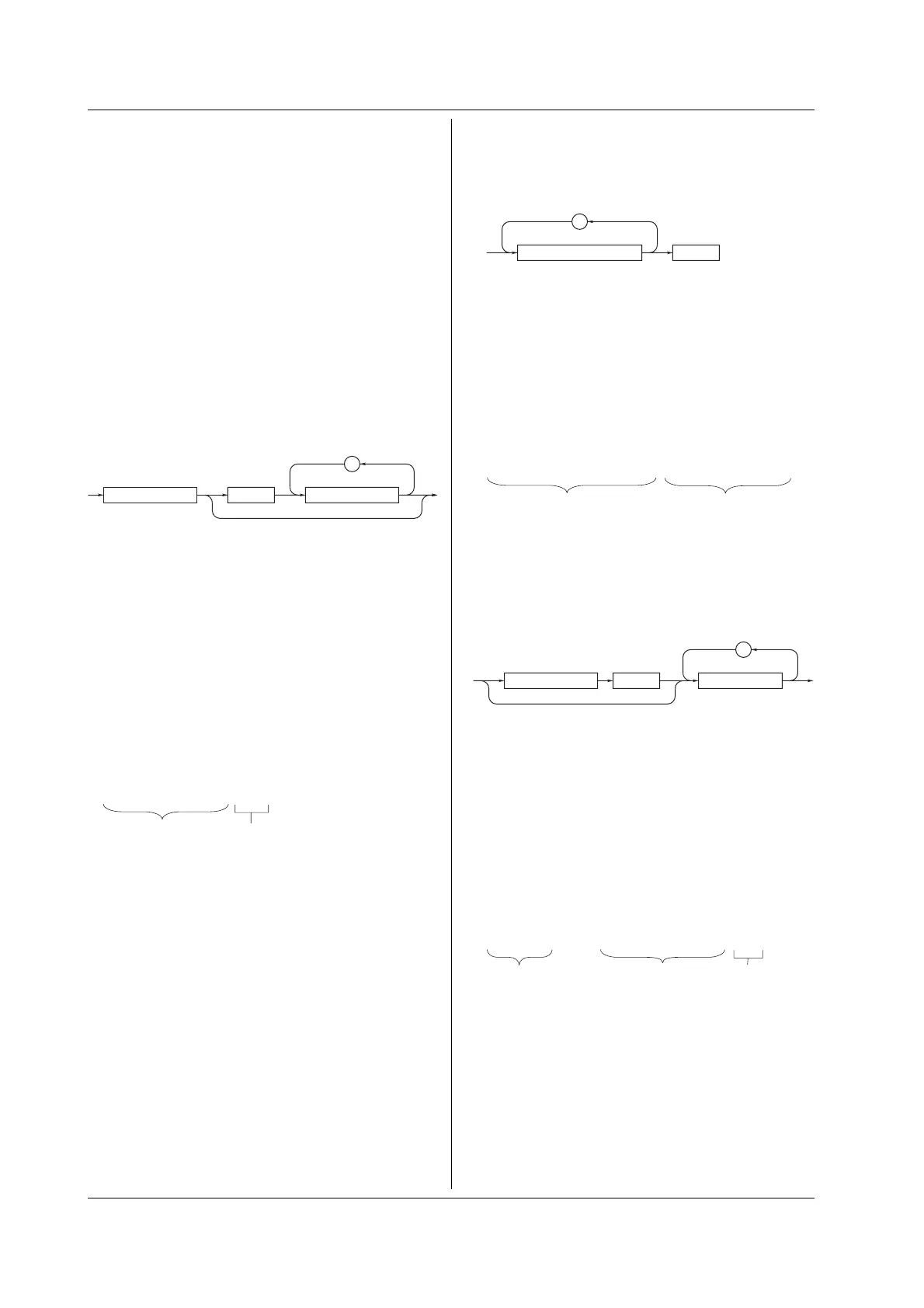16-2
IM 765501-01E
<PMT>
<PMT> is a program message terminator. The
following three types are available.
• NL (New Line)
Same as LF (Line Feed). ASCII code “0AH”
• ^END
The END message (EOI signal) as defined in the
IEEE488.1. (The data byte that is sent with the
END message is the last data of the program
message.)
• NL^END
NL with an END message attached. (NL is not
included in the program message.)
Program Message Unit Format
The program message unit format is shown below.
,
<Program header> <Program data>Space
<Program Header>
The program header indicates the command type. For
details, see page 16-3.
<Program Data>
If certain conditions are required in executing a
command, program data is added. A space (ASCII
code “20H”) separates the program data from the
header. If there are multiple sets of program data, they
are separated by commas (,).
For details, see page 16-5.
Example:
Header
Data
:SAMPLE:GATE:MODE TIME<PMT>
Response Messages
Data that is sent from the instrument to the controller
are called response messages. The response
message format is shown below.
<RMT>
;
<Response message unit>
<Response Message Unit>
A response message consists of one or more
response message units; each response message unit
corresponds to one response.
Response message units are separated by a
semicolon (;).
For details regarding the format of the response
message unit, see the next section.
Example:
Unit Unit
:SAMPLE:INHIBIT:STATE 1;POLARITY POSITIVE<RMT>
<RMT>
<RMT> is a response message terminator. It is NL^END.
Response Message Unit Format
The response message unit format is shown below.
,
<Response header> <Response data>Space
<Response Header>
A response header sometimes precedes the response
data. A space separates the data from the header.
For details, see page 16-5.
<Response Data>
Response data contains the content of the response.
If there are multiple sets of response data, they are
separated by commas (,).
Example:
Data
Header
Data
500.0E-03<RMT> :SAMPLE:GATE:MODE TIME<RMT>
If there are multiple queries in a program message,
responses are made in the same order as the queries.
In most cases, a single query returns a single
response message unit, but there are a few queries
that return multiple units. The first response message
unit always corresponds to the first query, but the n
th
response unit may not necessarily correspond to the
n
th
query. Therefore, if you want to make sure that
every response is retrieved, divide the program
messages into individual messages.
16.1 Program Format
